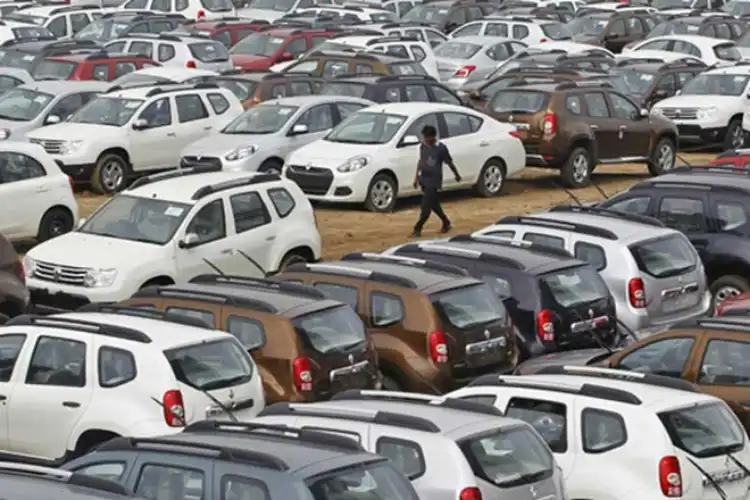
 Sushma Ramachandran
Sushma Ramachandran
India’s passenger car industry finally seems to have emerged out of the Covid-era doldrums. Sales have nearly matched the pre-pandemic levels of 2019 in the first quarter of the current fiscal (2022-23). What is even more significant is that the structure of the market has undergone significant changes. From a price-sensitive market that gave primacy to small entry-level vehicles, there has been a shift towards the more expensive and sturdy on-road SUVs (sports utility vehicles) which are now dominating sales. The industry is also moving towards more ecologically friendly vehicles with sales of electric cars rising sharply.
This particular industry is considered a bellwether for the economic growth due to its widespread nature, the large number of ancillary industries and the enormous employment potential. It was, therefore, a matter of concern during the pandemic when sales dipped drastically. Output had begun to pick up last year, but disruption in supply chains owing to global movement curbs linked to the Covid virus led to shortages of semiconductors. This has been a world-wide problem for car manufacturers who are increasingly dependent on chips to ensure sustained production. As a result even though demand picked up since the end of 2021, the actual availability has been much lower and cause of long waiting periods for consumers.
The situation has eased recently with semiconductor supplies having picked up though the industry’s full demand is still being met intermittently, according to industry experts. Even so, sales have crossed eight lakh units in the April-June period, the best since the first quarter of the pre-pandemic year, 2019-20. June sales have shown the strongest growth with a rise of 26 percent compared to the same month last year.
Automobile industry experts maintain that the surge in passenger car sales lately is largely due to the unprecedented demand for SUVs. Nearly 50 percent of total passenger car sales during the last fiscal were of utility vehicles. As a result, every manufacturer has been launching new models in this category over the past six months.
The other major alteration in the market has been the aggressive drive to move towards electric vehicles. Among the luxury segment, Audi has already announced that it will now only be making electric cars. In the more affordable segment, Tata Motors seems to rule the roost. Sales volumes are not huge compared to other categories but the pace of growth is surprising. Compared to sales of only 658 units in June 2021, these rose to 3507 units in the same month this year. Given the high prices of both petrol and diesel, consumer demand is growing rapidly for the new generation of electric-powered passenger cars.
Apart from operational costs, the initial capital investment is now reduced considerably with prices of batteries fallING to 70 percent. The price of an electric vehicle is thus going to be comparable soon to fossil fuel-based cars. The competition between hybrid electric and entirely electric vehicles has already begun in the domestic market. With the growing environmental consciousness and the need to jettison fossil fuels, the expectation is that the demand for electric vehicles will grow exponentially around the world. The International Energy Agency has projected that there will be 70 million electric vehicles by 2025.
The bigger problem, however, will be the infrastructure needed in terms of charging stations for such cars. Unless this is available, it will not be possible for electric vehicles to be driven across the length and breadth of the country. Recognizing this lacuna, the Power Ministry has set a target to set up one charging infrastructure per 25 kilometers on the highway. But it has left it to cities or state transport hubs to develop specific targets and plans for their urban areas. The Delhi government, for instance, has just announced that EV charging stations will be launched at seven bus depots.
The Ministry has also planned that for semi-public charging, infrastructure will be provided at 20 percent of all parking capacity at the premises. These proposals are based on a Niti Aayog report on policies and standards for state and local agencies to establish an EV charging network. The report aimed to strengthen the charging infrastructure needed for the country’s development of EVs.
The report had also spoken of the prospects for battery swapping which was mentioned in the 2022-23 budget by Finance Minister Nirmala Sitharaman. The advantage of the battery swapping facility, according to the report, will be that the problem of battery charging in EVs can ultimately be eliminated. As a consequence, the Road Transport Ministry has already approved the sale and registration of battery-less EVs which is expected to improve the prospect of battery replacement solutions. Investments are also reportedly being made in the development of rechargeable battery ecosystems.
For those of us who are new to all these concepts, this is a brave new world in the automobile industry. The changes in the Indian passenger car front, however, are only reflective of the altered global scenario. The international EV market was estimated at around 160 billion dollars in 2020 and is projected to cross 800 billion dollars by 2030. The biggest market for EVs is China while Europe has also picked up with 17 percent of new car sales in 2021 being for EVs.
The passenger car industry is thus metamorphosing in many ways. On the plus side, the outlook is bright with sales having picked up considerably over the past few months. Expectations are that the current fiscal could bring back some normalcy to the market after the two dismal pandemic years. Much will depend, however, on the supply of chips and global supply chains continuing to operate normally without any disruption. The last caveat is that a fresh bout of Covid either within the country or abroad should not result in movement curbs, and hence affect output. In case these conditions are met, the passenger car sector looks set for a surge in output and sales in the coming year.
